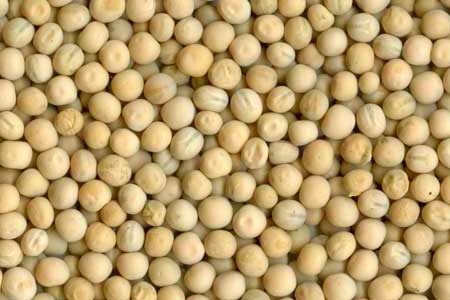Pig research: How digestible is phosphorus in peas

ABSTRACT: An experiment was conducted to determine true digestive utilisation of phosphorus (P) in the common yellow field pea (Pisum sativum) by growing pigs.
Eight barrows (average body weight=31.9kg) were fed 4 diets in a replicated 4×4 Latin square design. The 4 diets were a maize starch-based diet with 4 levels of P (1.1, 1.6, 2.3 or 2.8g/kg dry matter; DM) from pea.
All the 4 diets contained chromic oxide (4g/kg) as an indigestible marker. Endogenous P outputs and true ileal and total tract P digestibility coefficients were estimated using the regression method.
There was no effect (P>0.05) of dietary treatment on apparent total tract P digestibility. However, an increase in dietary level of P through dietary pea inclusion resulted in a quadratic response (P<0.05) in apparent ileal P digestibility such that the apparent ileal P digestibility was lower for the diet with 1.6g/kg P than for the rest of the diets. Total P outputs in ileal digesta and feces increased linearly (P<0.05) as dietary P increased. An increase in dietary level of P resulted in significant linear relationships (P<0.05) between apparent ileal or total tract digestible P intakes (g/kg DM intake) and total P intakes (g/kg DM intake). Coefficient of true ileal and total tract P digestibilities in pea were estimated to be 0.53 and 0.51, respectively. The endogenous P losses associated with pea were estimated to be 0.25g/kg DM intake in ileal digesta and 0.16g/kg DM intake in feces. There were no differences (P>0.05) between ileal and fecal levels with regard to the true P digestibility and endogenous P output associated with pea.
In conclusion, the true ileal or total tract digestibility values of P for pea were similar, and they could be used when formulating pig diets using the pea to match the pigs’ requirements and minimize excretion of P.











